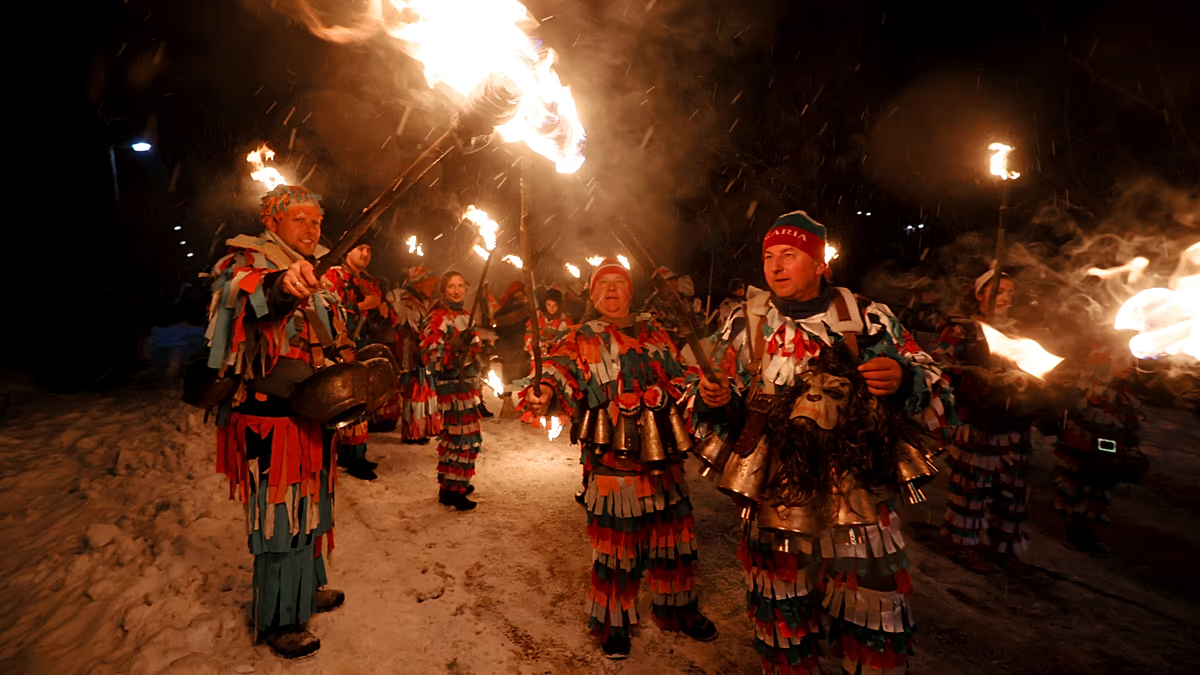Embracing Europe’s Winter Magic: A Seasonal Journey Beyond the Crowds
Winter travel in Europe often raises eyebrows – the common assumption being that summer is the only time worth visiting this diverse continent. I was guilty of this thinking myself when I first booked a February trip to northern Portugal, expecting nothing but rain and closed attractions. How wonderfully wrong I was! The Peneda-Geres National Park trails were blissfully empty, local restaurants welcomed us warmly, and conversations with owners over wine became cherished memories. This experience converted me into a passionate advocate for European winter travel, and I’m not alone – research indicates the winter tourism market in Europe is set to nearly double by 2035. While winter does bring shorter days and unpredictable weather, catching a week of crisp, sunny days reveals Europe at its most authentic and magical.
The practical benefits of winter travel are compelling. Significant discounts on flights and accommodation make destinations more accessible, and though some establishments close during the off-season, those that remain open greatly appreciate the business. Perhaps most appealing is the dramatic reduction in crowds – even the most popular landmarks become peacefully accessible. But winter in Europe offers so much more than just quieter city sightseeing. Remarkable cultural festivals come alive during these months, offering unique glimpses into Europe’s traditional heart. Scotland’s Up Helly Aa fire festival marks the end of Yuletide with torch processions and the burning of a Viking ship replica. In Bulgaria, the three-day Surva masquerade festival sees thousands in elaborate masks and costumes chasing away evil spirits according to ancient pagan traditions. Later in winter, vibrant Carnival celebrations bring color and excitement to countries like Spain and France, showcasing how Europeans have historically brightened their darkest season.
Wildlife enthusiasts find winter offers incomparable viewing opportunities across the continent. Norway’s coastal waters near Tromsø become theater to one of nature’s most spectacular shows as orcas and humpback whales hunt migrating herring against backdrops of snow-covered mountains. When darkness falls, the Northern Lights often dance overhead, creating truly magical evenings. Scotland’s Cairngorms National Park transforms into a tracker’s paradise, where expert guides lead small groups through pine forests and mountain passes to spot red squirrels, pine martens, free-roaming reindeer, and coastal seals – all more visible against the white landscape. In France’s alpine regions, winter conditions make wolf tracking possible, as experienced guides from operations like Undiscovered Mountains lead adventurers into remote areas following the prints and signs of these elusive predators in their natural habitat.
For those seeking physical rejuvenation through more adventurous means, winter swimming has become increasingly popular across Europe. While that first plunge requires genuine courage, destinations like Slovenia’s magnificent lakes offer the perfect introduction to this invigorating practice. Here, gentle dips in crystal-clear waters are complemented by warming saunas, starlit walks through snow-dusted pine forests, and delicious local treats like traditional cheesecake. As Alice Todd, co-founder of SwimQuest, explains, “Cold-water swimming isn’t just about the swimming – it’s about discovering how alive you can feel in a place.” The contrast between the shock of cold water and the subsequent warmth creates a profound bodily experience that participants describe as both adventurous and deeply grounding. These winter swimming retreats represent a growing recognition that sometimes the most rewarding experiences come from embracing rather than avoiding seasonal extremes.
Photography enthusiasts discover winter presents unique artistic opportunities unavailable in warmer months. Historic European cities like Venice and Prague reveal different personalities under winter skies – their bridges, squares, and spires becoming more atmospheric against moody backdrops, without summer’s tourist crowds disrupting carefully composed shots. Natural landscapes transform dramatically as well, offering photographers remarkable subjects: bearded vultures soaring over snow-encrusted peaks in the Spanish Pyrenees, or Iceland’s steaming volcanic fissures and partially frozen waterfalls creating otherworldly scenes. In Finland, companies like Wild Taiga organize specialized excursions where photographers can capture elusive wolverines from hides during daylight, then turn their lenses skyward at night as the Northern Lights perform their ethereal dance across Arctic skies. These conditions create opportunities for truly distinctive images that summer visitors simply cannot replicate.
Finally, winter offers ideal conditions for wellness-focused travel, helping to counteract seasonal affective disorder and boost energy during months when many feel lethargic. Fitness retreats across France, Spain, and Austria combine indoor training with invigorating outdoor activities like snowshoeing or winter hiking. The practice of forest bathing remains powerful even when trees stand bare, perhaps even more meditative without summer’s distractions. In Sweden’s wilderness areas, companies like Wild Sweden facilitate profound nature connection through guided meditation sessions, wood-fired saunas, and controlled exposure to ice baths – ancient practices scientifically proven to reduce stress and inflammation while improving mood. These winter wellness experiences represent a thoughtful alternative to simply enduring winter; they invite us to actively engage with the season’s unique qualities and find restoration within them. What better time than winter to reset, recharge, and welcome new beginnings than in Europe’s serene winter landscapes? The continent’s winter secrets await those willing to bundle up and discover them.


